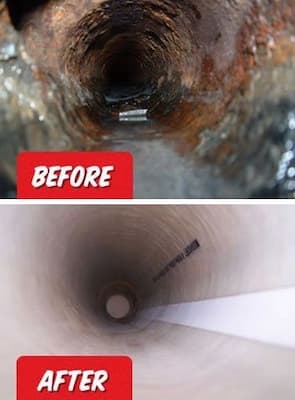Pipe Lining Explained: How It Works and Why It’s a Reliable Solution

When sewer and drain problems strike, the thought of tearing up a yard or flooring to access damaged pipes can be overwhelming. That’s where pipe lining steps in as a smarter, more efficient fix. This trenchless plumbing technique has transformed how homeowners and commercial property managers handle aging, cracked, or corroded pipes. And at Epoxy Pipe Restoration Southeast, CIPP lining is one of the most trusted solutions we provide for lasting results.
What Is Pipe Lining?
Pipe lining is a method used to repair existing sewer or drain lines by creating a new, seamless pipe within the old one. Instead of digging to remove and replace damaged lines, professional plumbing teams use advanced equipment to insert a flexible liner into the existing structure. This liner is then cured in place, forming a durable, jointless pipe that restores full function without the mess of excavation.
The most common and effective form of pipe lining is known as CIPP lining, which stands for Cured-In-Place Pipe. This technique works on residential, commercial, and even municipal pipelines. It’s particularly useful for addressing issues caused by root intrusion, corrosion, cracking, or age-related deterioration.
How CIPP Lining Works
CIPP lining starts with a detailed video inspection of the problem pipe. After locating the damage and cleaning the line thoroughly, a felt or fiberglass liner saturated with epoxy resin is inserted into the pipe. Using water or air pressure, the liner is pushed into place and inflated so that it fully adheres to the interior wall of the original pipe. Once it’s positioned correctly, the resin is cured using hot water, steam, or UV light.
The result? A smooth, strong, and corrosion-resistant new pipe within the old one. It essentially upgrades your system from the inside out.
Why Property Owners Choose Pipe Lining
More and more home and business owners are opting for pipe lining because of its many advantages. Unlike traditional dig-and-replace methods, trenchless solutions minimize surface damage, reduce project timelines, and eliminate many of the headaches that come with large-scale excavation.
Here’s why pipe lining stands out as a reliable, long-term solution:
- Minimal Disruption: No need to dig up floors, driveways, landscaping, or walls.
- Cost Efficiency: Lower labor and restoration costs compared to traditional repairs.
- Durability: Epoxy-lined pipes are resistant to root intrusion, rust, and scale buildup.
- Versatility: CIPP lining works on various pipe materials including cast iron, clay, and PVC.
- Environmentally Friendly: Less equipment, less waste, and fewer emissions than conventional pipe replacement.
These benefits make CIPP lining ideal not only for urgent repairs but also for proactive system upgrades in homes, businesses, and commercial facilities.
Is CIPP Lining Right for You?
If you're experiencing repeated clogs, slow drains, sewer odors, or even water damage from leaks, pipe lining might be the solution you need. It’s especially effective in older homes and commercial properties where pipe materials have degraded over time. Thanks to trenchless plumbing techniques like CIPP lining, you can resolve these issues without extensive excavation or disruption.
CIPP lining is also an excellent preventive option. Even if your system isn’t failing, reinforcing your lines with epoxy before major problems arise can help avoid emergencies and expensive damage down the road.
Call our expert team today to find out if pipe lining is right for your home or business. We're here to help you restore your plumbing system without the destruction.
Trust the Experts in Trenchless Pipe Repair
At Epoxy Pipe Restoration Southeast, we specialize in advanced pipe lining services across a variety of environments. From commercial sewer lines to residential drains, our professional plumbing solutions are tailored for lasting performance.
We don’t just apply a quick fix. Our team evaluates every system, recommends the right approach, and uses the best available materials to ensure that your CIPP lining holds strong for years to come.